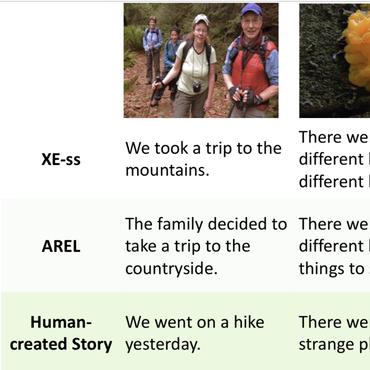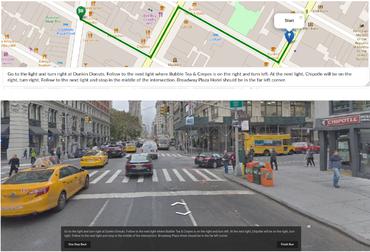Text Generation
1505 papers with code • 21 benchmarks • 115 datasets
Text Generation is the task of generating text with the goal of appearing indistinguishable to human-written text. This task is more formally known as "natural language generation" in the literature.
Text generation can be addressed with Markov processes or deep generative models like LSTMs. Recently, some of the most advanced methods for text generation include BART, GPT and other GAN-based approaches. Text generation systems are evaluated either through human ratings or automatic evaluation metrics like METEOR, ROUGE, and BLEU.
Further readings:
( Image credit: Adversarial Ranking for Language Generation )
Libraries
Use these libraries to find Text Generation models and implementationsDatasets
Subtasks
-
 Dialogue Generation
Dialogue Generation
-
 Data-to-Text Generation
Data-to-Text Generation
-
 Multi-Document Summarization
Multi-Document Summarization
-
 Text Style Transfer
Text Style Transfer
-
 Text Style Transfer
Text Style Transfer
-
 Story Generation
Story Generation
-
 Paraphrase Generation
Paraphrase Generation
-
 Spelling Correction
Spelling Correction
-
 Table-to-Text Generation
Table-to-Text Generation
-
 Headline Generation
Headline Generation
-
 Conditional Text Generation
Conditional Text Generation
-
 Visual Storytelling
Visual Storytelling
-
 Text Infilling
Text Infilling
-
 Distractor Generation
Distractor Generation
-
 Question-Answer-Generation
Question-Answer-Generation
-
 News Generation
News Generation
-
 Story Completion
Story Completion
-
 Code Documentation Generation
Code Documentation Generation
-
 Concept-To-Text Generation
Concept-To-Text Generation
-
 Paper generation
Paper generation
-
 Hint Generation
Hint Generation
-
 Profile Generation
Profile Generation
-
 Sonnet Generation
Sonnet Generation
-
 Fact-based Text Editing
Fact-based Text Editing
-
 Rules-of-thumb Generation
Rules-of-thumb Generation
-
 Molecular description generation
Molecular description generation
-
 Natural Language Landmark Navigation Instructions Generation
Natural Language Landmark Navigation Instructions Generation
Most implemented papers
Show and Tell: A Neural Image Caption Generator
Experiments on several datasets show the accuracy of the model and the fluency of the language it learns solely from image descriptions.
Learning Transferable Visual Models From Natural Language Supervision
State-of-the-art computer vision systems are trained to predict a fixed set of predetermined object categories.
Generating Sequences With Recurrent Neural Networks
This paper shows how Long Short-term Memory recurrent neural networks can be used to generate complex sequences with long-range structure, simply by predicting one data point at a time.
BART: Denoising Sequence-to-Sequence Pre-training for Natural Language Generation, Translation, and Comprehension
We evaluate a number of noising approaches, finding the best performance by both randomly shuffling the order of the original sentences and using a novel in-filling scheme, where spans of text are replaced with a single mask token.
Diverse Beam Search: Decoding Diverse Solutions from Neural Sequence Models
We observe that our method consistently outperforms BS and previously proposed techniques for diverse decoding from neural sequence models.
SeqGAN: Sequence Generative Adversarial Nets with Policy Gradient
As a new way of training generative models, Generative Adversarial Nets (GAN) that uses a discriminative model to guide the training of the generative model has enjoyed considerable success in generating real-valued data.
Language Models are Unsupervised Multitask Learners
Natural language processing tasks, such as question answering, machine translation, reading comprehension, and summarization, are typically approached with supervised learning on taskspecific datasets.
BERTScore: Evaluating Text Generation with BERT
We propose BERTScore, an automatic evaluation metric for text generation.
BLIP-2: Bootstrapping Language-Image Pre-training with Frozen Image Encoders and Large Language Models
The cost of vision-and-language pre-training has become increasingly prohibitive due to end-to-end training of large-scale models.
Prefix-Tuning: Optimizing Continuous Prompts for Generation
Fine-tuning is the de facto way to leverage large pretrained language models to perform downstream tasks.




















 WikiText-2
WikiText-2
 WikiText-103
WikiText-103
 CNN/Daily Mail
CNN/Daily Mail
 DailyDialog
DailyDialog
 BookCorpus
BookCorpus
 COCO Captions
COCO Captions
 ROCStories
ROCStories
 ELI5
ELI5

